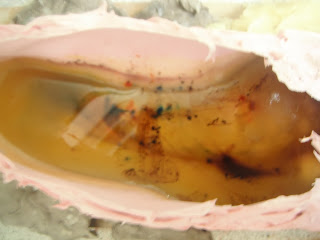South Korean
artist Yun-Woo Choi creates mind-bending three-dimensional sculptures out of
rolled-up recycled magazines like artist David Mach. Captivated by theoretical physics and the notion
of multiple dimensions (14 in all, according to scientists), Choi uses his art
to explore the possibility that emotions, dreams and even god occupy some kind
of invisible space. And he does all this without creating a pile of waste.
Using resin,
wire and recycled newspapers and magazines, Choi creates 3-D sculptures that
are at once ephemeral and actually quite solid. The giant funnel that protrudes
from a wall looks very similar to Alicia Martin’s book sculptures that appear
to pour out of walls – at least in terms of its apparent strength.
I find a great energy and momentum are captured in these pieces , alot of ideas to be taken from the artists use of materials and use of recycled goods and textures

![[kawamata+versailles+2.jpg]](https://blogger.googleusercontent.com/img/b/R29vZ2xl/AVvXsEhobluzWqRhKsSiqTGoDtBHXs6-k3F7Dyr2GClMmVuNN-0bF15O7R_17rP9SvD9WuQHHJa10mmeNTM8ELH1PcoG7eY6Iu2GNIPnEU0CwPSl06eJ3609bJ7YoIO9YC83nhmVZFcDZombXVAa/s1600/kawamata+versailles+2.jpg)










































